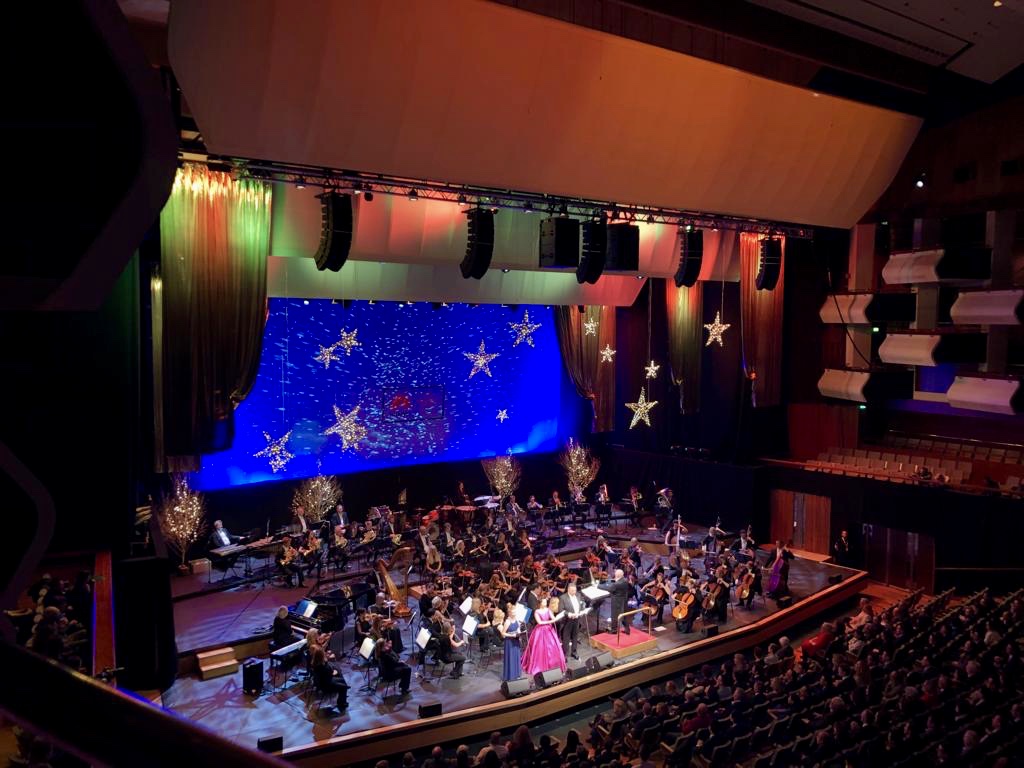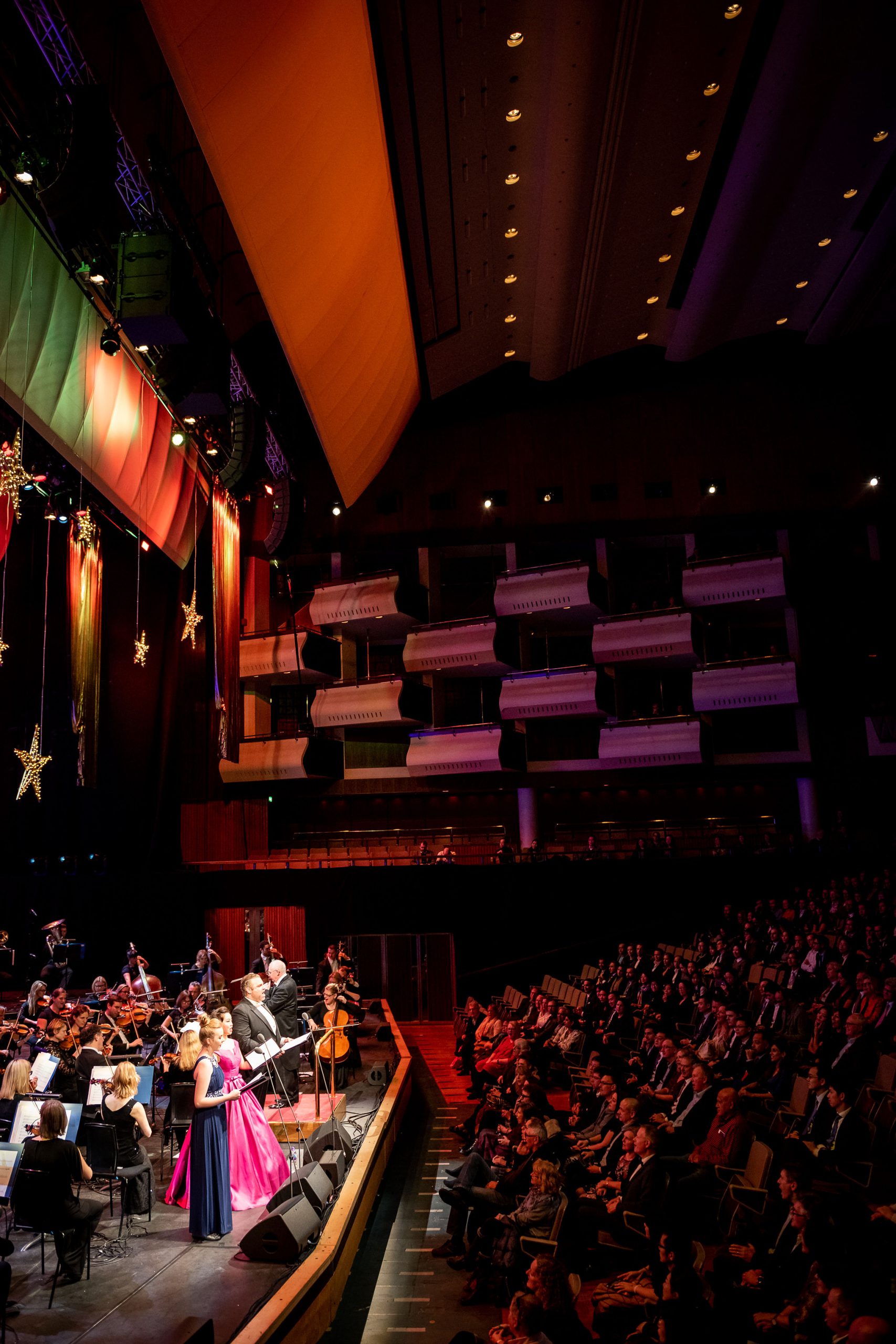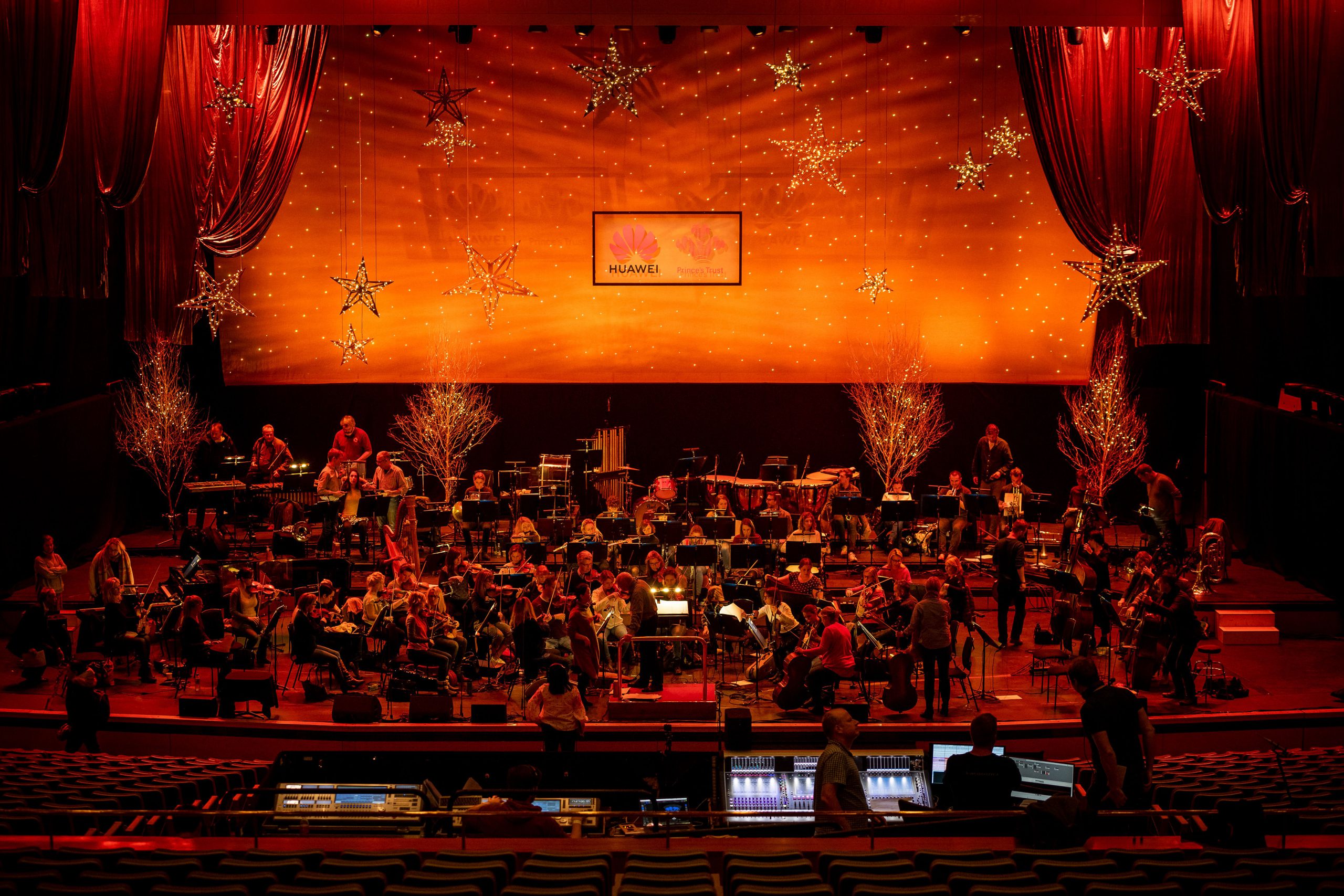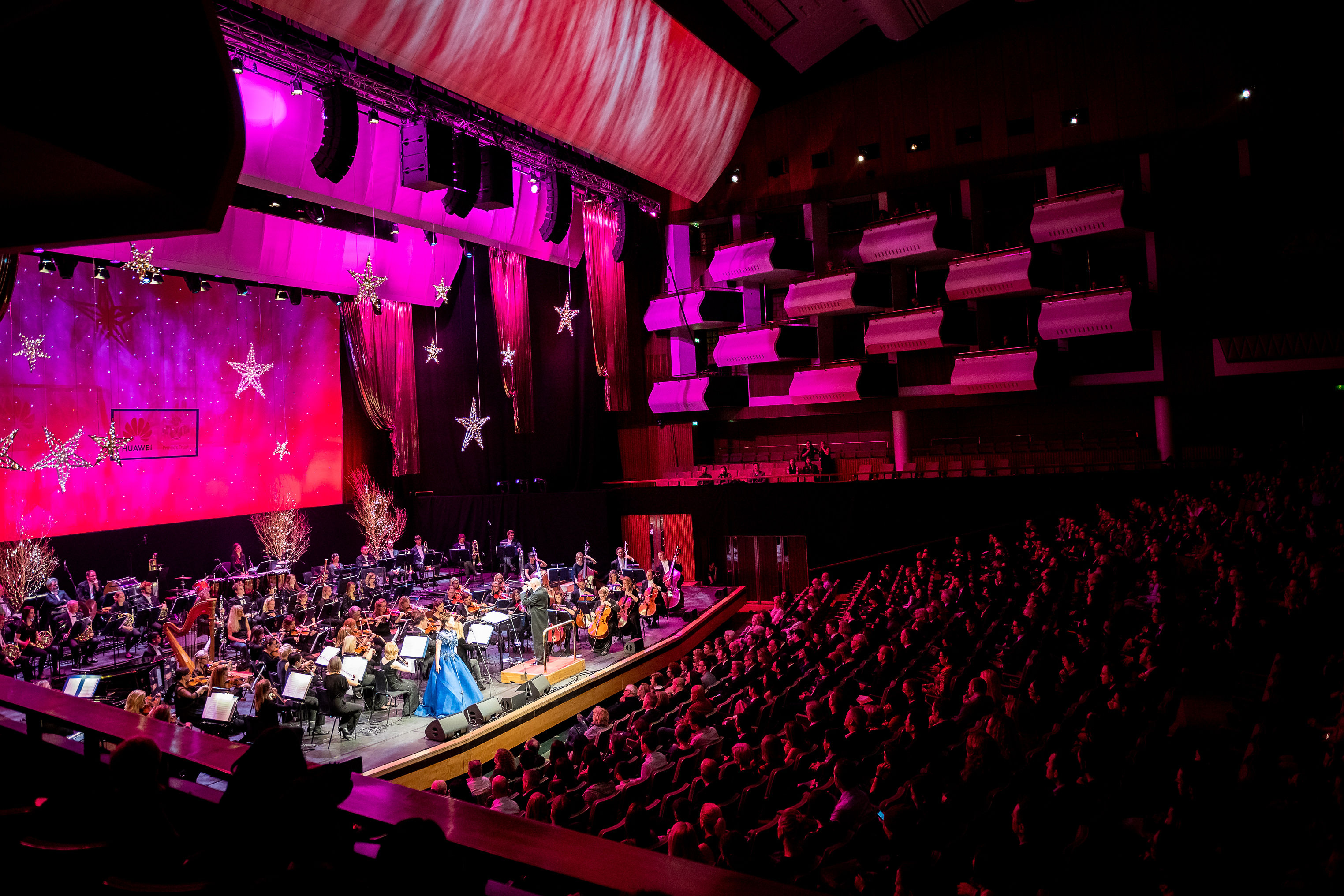December saw the ninth year of Huawei Technologies’ sponsorship of the London Winter Concert, held at London’s Royal Festival Hall (RFH) in aid of the Prince’s Trust charity. This spectacular event featured the Royal Philharmonic Concert Orchestra, conducted by Paul Bateman, and had a line-up led by tenor Joseph Calleja, with special guests soprano He Wu and young singing talent Beau Dermott. Although the Winter Concert is long-established in the RFH calendar, this year saw a completely new approach to audio production, with L-ISA Hyperreal Sound delivering an extra frisson to proceedings.
Reactor Group has been supplying production management, sound design and its implementation to the Winter Concert for the past three years and, as Technical Director for the event, Reactor’s Jim Pollard explains, they wanted to improve on its previous two, highly successful years.
“At Reactor, we don’t like sticking with something because ‘it was fine last time’,” he says. “Internal discussions with Martin Dineley, Front of House engineer for the event, and Craig Harvey, L-Acoustics Application Engineer, convinced me that using L-ISA would offer an even more qualitative experience. What a great decision it was! Honestly, I was blown away and I’ve never heard quite so much positive feedback about audio on any show I’ve ever worked on.”
“This was my second year looking after the audio for the Winter Concert,”adds Dineley. “Last year, we used a standard stereo system and it worked really well, but at about the same time I was working on my first large-scale L-ISA event, the 46th UAE National Day in Abu Dhabi, so its capabilities were fresh in my mind. I had sat during rehearsals at the RFH last year thinking, ‘This would really lend itself to L-ISA, we could really improve it.’ This year, I was able to put those ambitions into practice and it really changed things. Not only does it allow the vast majority of the audience to perceive wide and deep spatialized audio, L-ISA also completely changes your priorities and your expectations when you’re at the mixing console. The benefit, particularly for an orchestra, is its natural presentation and the fact that each instrument now has real space in the mix.”
A proscenium Scene system was designed in L-Acoustics 3D acoustical simulation programme, Soundvision, comprising five hangs of nine Kiva II supplemented by two hangs of two SB18 (one either side of the centre hang). Six X8 were mounted on the stage lip to provide front fill, with the centre two X8 split either side of the conductor’s platform, whilst four X12provided foldback for the soloists. All speakers were driven by LA12X amplified controllers and a DiGiCo SD7 console was used to mix the show, with each of its two engines having its own L-ISA Processor.
With the RFH being a relatively narrow room, the configuration delivered realistic localisation of the audio and good coverage in all areas, with an L-ISA zone achieved for the majority of the audience.
Dineley notes there were additional advantages over the stereo systems they had used previously: L-ISA can achieve the same coverage and SPL as a stereo system, but with less cabinets per hang, allowing the truss to be in a lower position without compromising the lighting or projection positions. This lower position also meant that the sound reached under the balcony, which had the double advantage of dispensing with the inconvenience of having to use under balcony fills, while maintaining L-ISA coverage throughout the venue.
With an extremely tight schedule—in, show, and out in just 25 hours—there was no time to waste and Dineley was appreciative of the help given to him by the L-ISA team in advance of the show.
“L-Acoustics was on board all the way,” he recalls. “I was given time in the L-ISA studio in London with their guru, Sherif El Barbari, and all the backup I needed which, as it turned out, wasn’t much because I found the system pretty intuitive. On the day, everything went as predicted thanks to a great team before and during the event.”
Pollard states that the results from L-ISA were a huge improvement on previous years, giving more even coverage to much more of the venue, and with a clarity he had not heard before from an orchestra of that size; whilst Dineley says he was proud of what the audio team had produced.
“The entire day felt controlled and good humoured, without any upset or worry and, on the evening, we produced a show we all could say had moved expectations even higher for the next event,” Dineley smiles. “The audience at the RFH are an extremely discerning and knowledgeable bunch, so it was particularly gratifying that we received so many compliments. Not everyone knew why it sounded so much better this year, but almost all agreed that it did. I was only too happy to take those pats on the back.”

The Huawei Winter Concert, held at London’s Royal Festival Hall (RFH). 
The L-ISA Scene system comprised five hangs of nine Kiva II supplemented by two hangs of two SB18s. Front fill was from six X8 mounted on the stage lip, with the centre two X8 split either side of the conductor’s platform. 
Four X12 provided foldback for the soloists. 
A DiGiCo SD7 console was used to mix the show.
